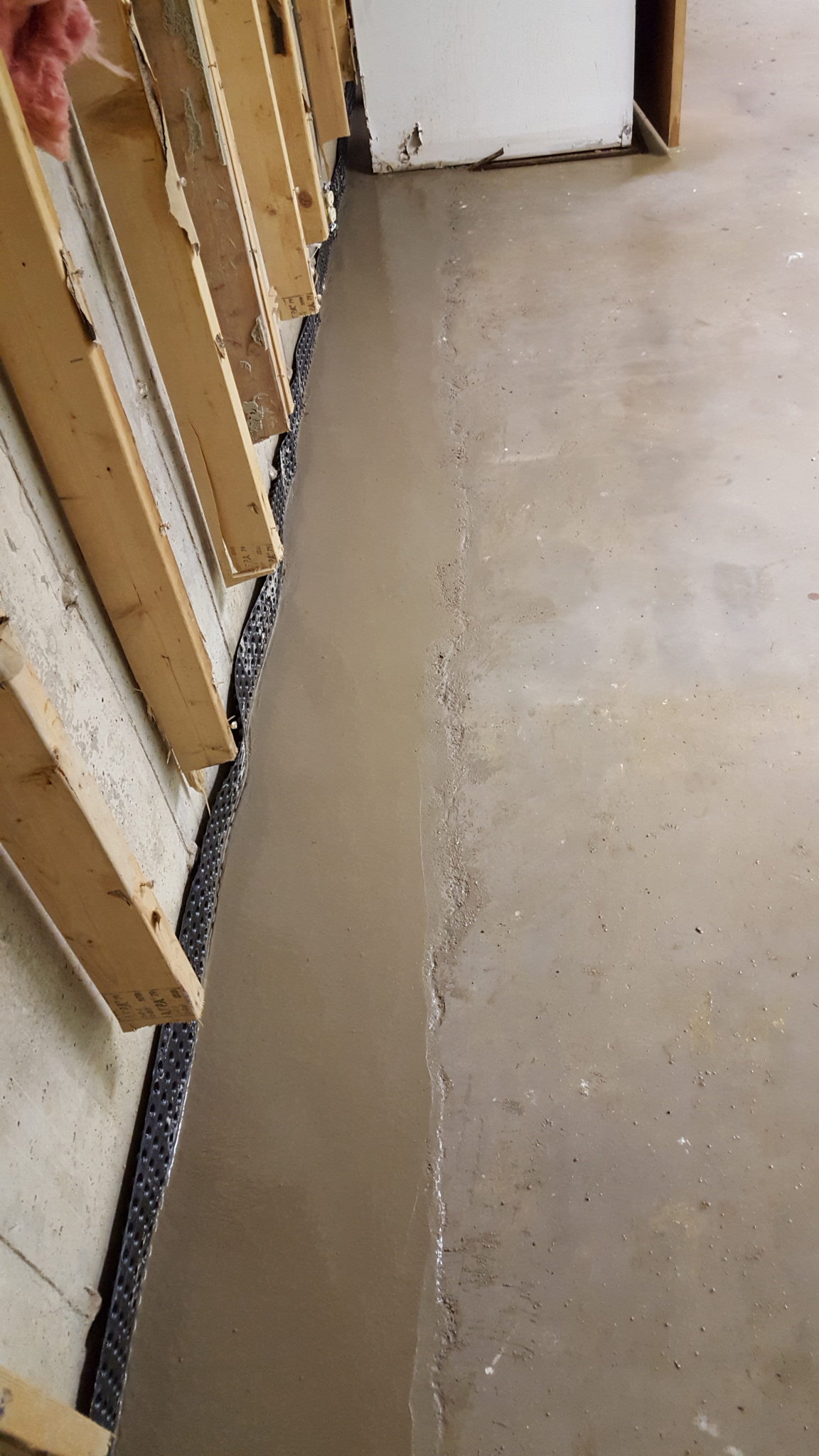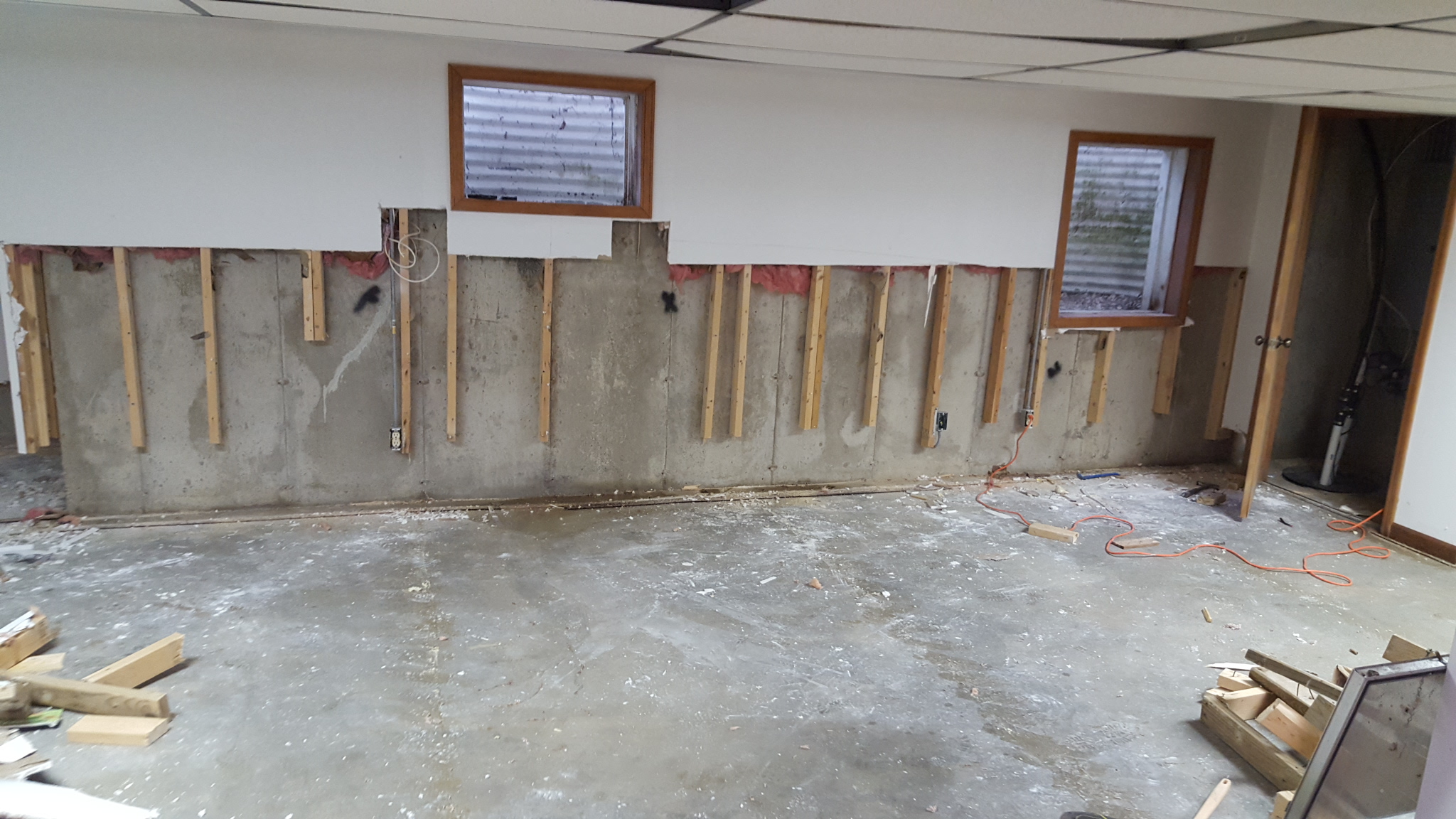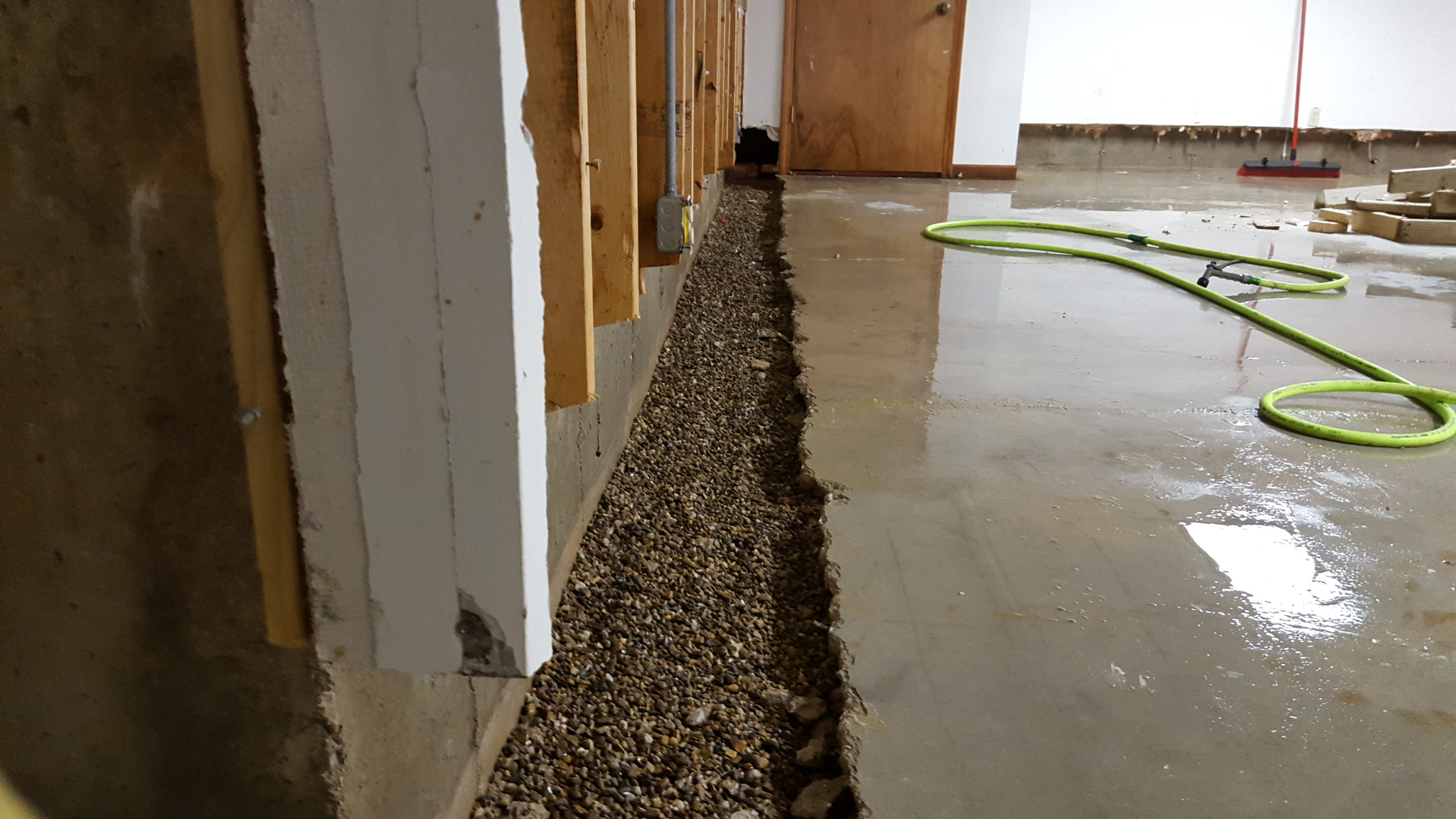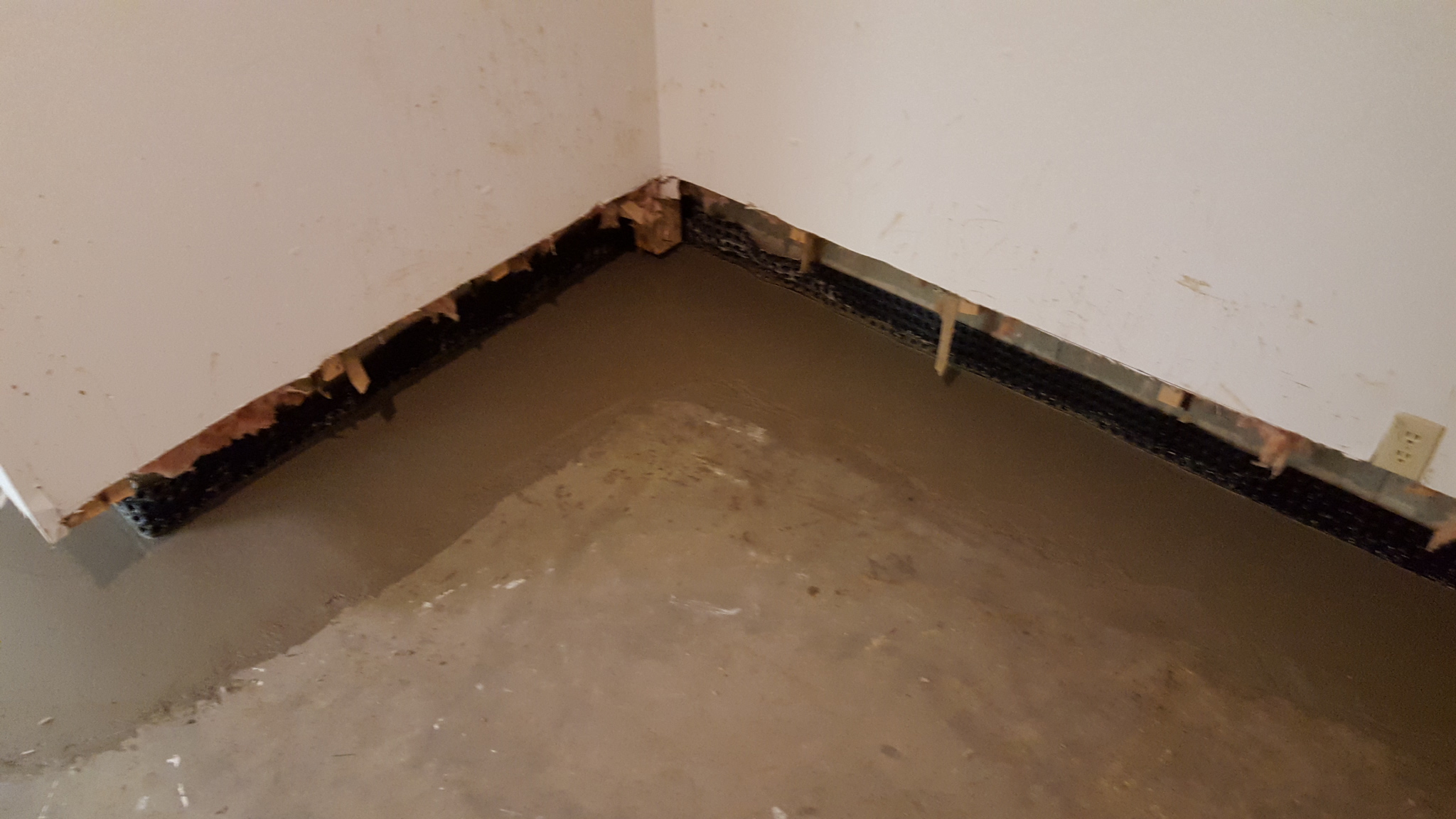Drain tile is one of the best solutions on the market today for basement waterproofing.

An expert Drain Tile Installation by trained professionals like those at Seepageseal can protect your basement from seepage, water damage, and flooding. Coupled with other passive waterproofing measures and sound roof and yard drainage design, you can virtually eliminate the risk of having a rude, wet surprise in your basement, even through the worst monsoons or hurricanes.
But what exactly is drain tile? How does it work? And what’s involved with the Drain Tile Installation process? This article will answer those questions, and provide consumers with insight into the basics of exterior and interior Drain Tile Installation – and why it is best left to experts like those at Seepageseal.
What is Drain Tile and How Does It Work?
Drain tile, despite its name, is not a type of tile. Rather, it is a system or series of perforated pipes or hoses, designed to drain groundwater away from the foundation and basement walls in a home. Typically these systems take the form of either exterior or interior drain tiles. For maximum efficacy, both types are recommended to be used together.
The exterior drain tile removes water outside, reducing the pressure on the foundation and the potential for seepage into the basement. The pipe sits in a trench adjacent to the foundation of the home. This typically drains away from the home to the street/catch basins/storm sewers.
The interior drain tile catches and collects any water that does make it into the basement and routes it to a sump pit and pumps for evacuation as needed. These pipes generally sit at the base of a foundation, between the foundation and the concrete slab floor in a basement. As such, the Drain Tile Installation for the interior portion of the system is far more complex than that for the exterior portion, as it often involves concrete demolition. We provide professional services for basement waterproofing in Woodridge, so feel free to reach out to us if you have a flooded or water damaged basement.
When Can Drain Tile Installation Take Place?
Drain Tile Installation, especially inside the basement, is easiest to accomplish as part of the initial construction of a home, or immediately after that. It allows a drain tile system to be built-in, so to speak and can save significant time and complex excavation and demolition work later on. However, it is possible to conduct a Drain Tile Installation at any time – it is simply more exacting and complicated work to do after-the-fact. This is one of many reasons why Drain Tile Installation is generally not a DIY project and should be left to professionals like Seepageseal.
For an exterior Drain Tile Installation after-the-fact, significant excavation work will need to be done around the exterior of the home, immediately adjacent to the foundation. It may require relocating or replant landscaping elements, beds, walkways, or similar. An exterior Drain Tile Installation may not be practical if expensive, semi-permanent items like decks and patios are adjacent to the home. A consultation with a professional Drain Tile Installation expert from Seepageseal is often the best way to determine what options are available for a specific home.
Likewise, an interior Drain Tile Installation after-the-fact can present quite a challenge. An area of concrete slab flooring will generally need to be removed (often with a jackhammer or other equipment) from the entire border with the basement walls. If no sump pit is present, that, too, will need to be excavated and built. This is most definitely a task for professionals like those at Seepageseal, who have the equipment and training necessary to complete the job.
Drain Tile Installation Process
Both exterior and interior Drain Tile Installation utilize the same principles, though differ quite a bit in the exact details and workload involved. We’ll walk through the details of each of the two types of installations below. However, in general, the process of Drain Tile Installation can be summarized as:
1. Developing a site plan for the particular home in question.
2. Excavation/demolition of the areas adjacent to the basement walls to suitable depths to allow for tile/pipe installation.
3. The lining of the trench with gravel.
4. Installation of pipe, often with a filter membrane.
5. Routing of pipes to the sump, or another evacuation point.
6. Backfilling of the trench.
7. Addition of passive waterproofing measures like drainage board.
8. Refurbishment of disturbed surfaces with concrete.
Exterior Drain Tile Installation
An exterior Drain Tile Installation typically begins with an analysis of the home and surrounding area. In some cases, the work involved in an exterior Drain Tile Installation may be cost-prohibitive or require unwanted disturbance to exterior home features like decks or patios. Often, topographical measurements will need to be taken to plan the slope(s) for drainage piping. Landscaping and other surrounding elements typically need to be discussed, as they will be disturbed (at least temporarily) during the Drain Tile Installation process.
Once the site plan is complete and the project initiated, the next step is digging a trench immediately adjacent to the foundation of the home, suitable width, and depth for the necessary piping and gravel. First, fine gravel is placed in the bottom of the trench. The gravel will act as a natural filter for water, ensuring that any dirt, mud, or other sediments are filtered out and won’t get stuck in or clog up the pipes. Then, the piping is installed, with specific height and slope adjusted to ensure proper water drainage. Often, the pipeline will have a filtration membrane around it, to once again help prevent sediment from clogging the holes or slots in the pipe.
Evacuation points are linked at this stage, with necessary additional piping to outlet points such as a road, catch basin, or storm sewer being installed. Then the system is usually tested by injecting water from a hose or other means, to ensure there are no blockages, and that the slope and flow are ideal. Finally, the rest of the pipe is surrounded by gravel, and then the trench is backfilled with dirt. This completes the primary phase of the Drain Tile Installation.
Once the trench is filled, any additional passive waterproofing measures are installed. For exterior Drain Tile Installations, these may include items like gutter/downspout extenders, or other piping run to route rainfall from gutters to a proper outlet point. The experts at companies like Seepageseal can offer a full range of waterproofing options as well as advice on DIY solutions.
The last step of the Drain Tile Installation is to restore and refurbish the surface of the excavated area. This involves re-integrating any disturbed landscaping, grass, planters/beds, bushes, walkways, or similar, to like-new condition.
Interior Drain Tile Installation
An interior Drain Tile Installation follows a similar path to that of the exterior installation. First, an analysis of the basement needs to be undertaken, and the natural slope/drainage paths determined. Next, rather than simple excavation, this process first requires demolition – removal of up to a foot of concrete slab floor from the entire border of the basement where it abuts the walls. This step typically requires heavy equipment and can be hazardous if not properly trained – it is best left to professionals like those from Seepageseal.
After sufficient demolition, a shallow trench (about 1 foot deep) is excavated in the space below where the demolished floor once stood. It is then lined with gravel, piping installed (again with filter membranes), and slope/fall adjusted such that the ultimate “low point” for the water in the corner of the basement with the sump pit. If no sump pit exists, additional demolition and excavation work is undertaken to build one. The system is then tested, and any adjustments made, before filling in the trench with gravel and backfilling with dirt.
In an interior Drain Tile Installation, many passive waterproofing measures can be added at this stage. In addition to the necessary sump pump, most companies like Seepageseal can offer sealants for the basement walls and other products designed to work in concert with the drain tiles to prevent any serious seepage or water accumulation. The final step of the interior Drain Tile Installation is pouring new concrete flooring over the top of the filled-in trench, to replace the flooring that was demolished.
Drain Tile Installation by Seepageseal
As is evident from the process descriptions above, Drain Tile Installation, especially the interior variety, is a complex process. It often involves heavy and specialized equipment, significant training, and experience. For these reasons, it is strongly recommended that any Drain Tile Installation be done by trained professionals. Seepageseal has the skills, experience, and equipment to get the job done right, with as little disruption to your home as possible.
Ultimately, Drain Tile Installation by Seepageseal provides peace of mind, both during and after the Drain Tile Installation process. You’ll know that no matter what kind of weather mother nature brings your way, your basement is going to stay dry, and your home, possessions, and family safe. If you are looking for basement repair services in Naperville or Woodridge IL, feel free to get in contact with any questions you may have. We also offer a professional service for the installation of Egress windows in Woodridge, IL.



